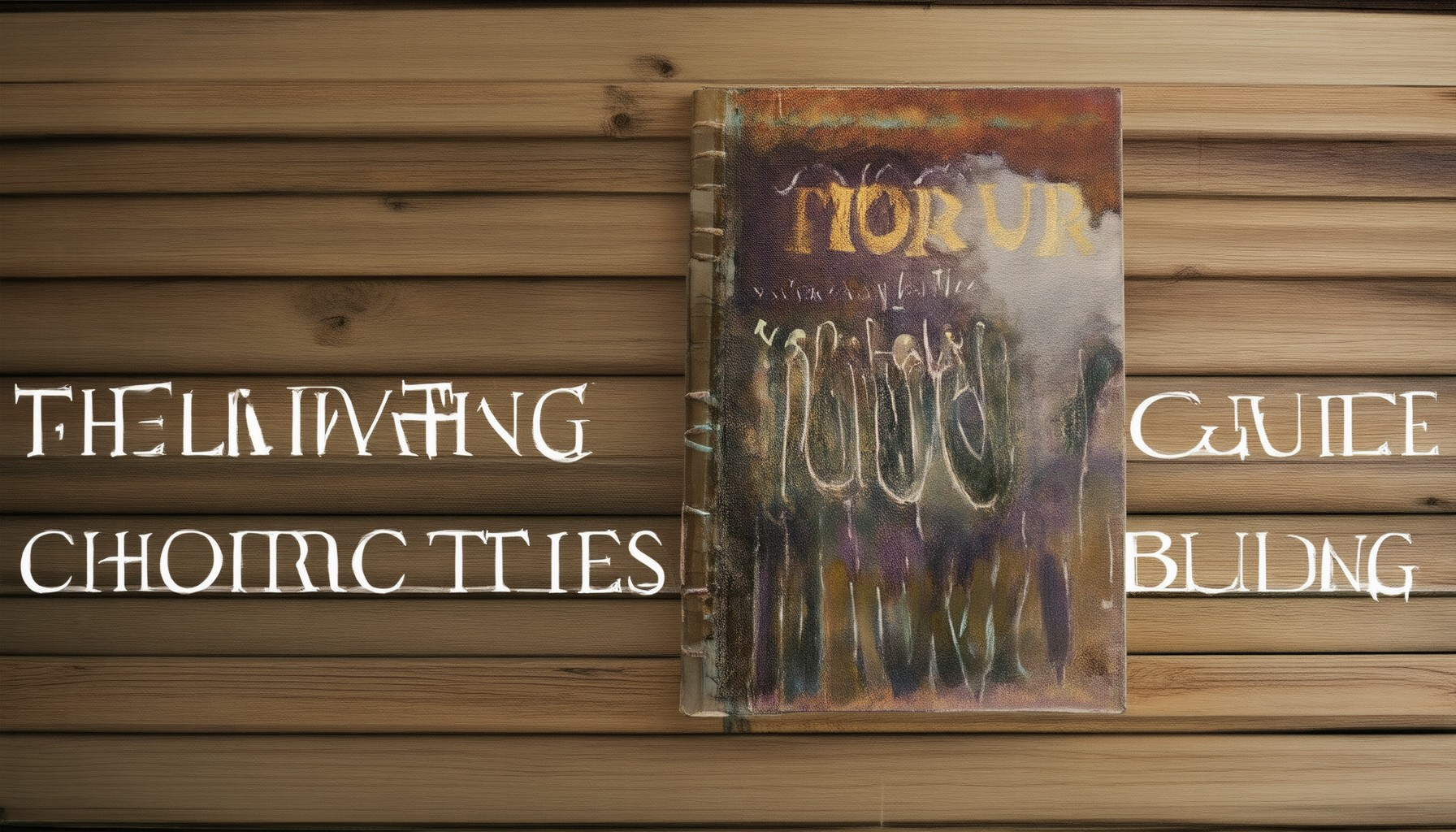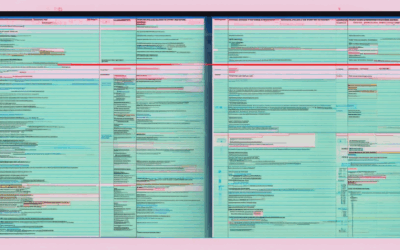Every great story begins with a captivating character, one that draws readers in and keeps them hooked. The art of creative character building is the cornerstone of compelling narratives, transforming flat figures into living, breathing entities that resonate with audiences. Whether you’re crafting a novel, designing a video game, or penning a screenplay, the ability to create dynamic, multifaceted characters is essential for elevating your storytelling to new heights. This guide delves into the techniques, strategies, and methods that will help you master the craft of creative character building, ensuring your characters stand out and leave a lasting impact.
Key Takeaways
- Uncover Creativity Through Unique Skills: Endow characters with extraordinary talents like invention or art to showcase their creative nature.
- Highlight Creative Environments: Depict chaotic yet organized settings filled with scattered notes and sketches to indicate a creative mind.
- Depict Curious Communication: Show characters communicating with enthusiasm and curiosity, inspiring those around them.
- Use Metaphors for Thought Processes: Illustrate their minds as storms of ideas or labyrinths of thoughts.
- Exhibit Innovative Problem Solving: Demonstrate creative approaches to challenges with unexpected solutions.
- Capture Moments of Inspiration: Depict sudden insights that reveal unique idea connections.
- Show Growth Toward Creativity: Illustrate journeys of learning and overcoming setbacks to develop creativity.
- Define Core Traits for Compelling Characters: Outline essential traits, strengths, weaknesses, and motivations.
- Craft Rich Backstories: Develop histories that shape characters’ beliefs and actions.
- Set Clear Goals: Assign objectives that drive actions and create internal conflicts.
- Motivate with Personal Desires: Align motivations with personalities and world contexts.
- Build Interactive Relationships: Surround characters with those who challenge, support, or oppose them.
- Develop a Distinct Voice: Create unique thinking and speaking styles for memorability.
- Ensure Behavioral Consistency: Keep behaviors aligned with established traits for credibility.
- Facilitate Character Growth: Allow evolution through challenges, learning, and fear overcoming.
- Balance Strengths and Flaws: Present realistic traits for relatability.
- Express Vulnerabilities: Reveal emotions to deepen reader connections.
- Design Effective Silhouettes: Use clean lines and proportions for natural appearances.
- Add Intricate Details: Enhance silhouettes with textures and facial features.
- Choose Personality-Reflective Colors: Use warm tones for approachable characters and cooler hues for mysterious ones.
- Craft Expressive Eyes: Vary sizes and positions to convey emotions and personality.
- Create Movement with Clothing: Design clothes with lines and folds suggesting motion.
- Include Relevant Props: Use items like swords or books to enhance character roles.
- Iterate for Polished Designs: Refine designs based on feedback for cohesion and appeal.

How to Create a Creative Character
To craft a memorable and creative character, focus on the following key aspects:
- Unique Traits and Quirks : Give your character distinctive features that set them apart. Whether it’s a catchphrase, a peculiar habit, or an unusual talent, these details make them unforgettable.
- Setting and Environment : Consider the world around your character. The setting can shape their personality and behavior. For instance, a tough detective in a gritty city versus a kind farmer in a serene village.
- Motivations and Backstory : Understand what drives your character. Are they driven by revenge, love, or a greater cause? A well-defined backstory adds depth and relatability.
- Conflicts and Challenges : Every great character faces obstacles. Whether internal (fear, doubt) or external (adversaries, societal pressures), these challenges shape their growth.
- Supporting Characters : Develop sidekicks, mentors, or rivals that complement your protagonist. These interactions enrich your story and provide perspective.
- Consistency : Stay true to your character’s established traits and motivations. Consistency builds credibility and keeps audiences engaged.
What Are the 4 Types of Character Development?
In literature, character development is a crucial aspect that helps authors create relatable and multi-dimensional figures. Below are the four primary types of character development:
- Dynamic Characters : These are characters who undergo significant transformation throughout the story. They evolve emotionally, mentally, or physically, often in response to external events or internal struggles.
- Static Characters : In contrast, static characters remain unchanged. Their personality, beliefs, and behaviors don’t develop or change significantly during the narrative.
- Round Characters : Round characters are those who are deeply developed. They possess complex traits, motivations, and backgrounds, adding depth to the story and making them memorable to readers.
- Flat Characters : Flat characters, on the other hand, lack depth. They may serve specific purposes in the plot but don’t grow or change meaningfully.
Understanding these types of character development allows writers to craft stories that resonate with readers on multiple levels. By focusing on dynamic and round characters, authors can create narratives that explore growth and complexity, while flat and static characters can be used to advance plots or provide essential perspective.

Character-Building Activities
-
Role-Playing
Engage in role-playing exercises to practice communication skills, emotional intelligence, and adaptability. Whether online or in-person, these activities allow for immersive experiences that enhance self-awareness and interpersonal relationships.
-
Journaling
Keep a daily journal focused on personal growth and reflection. Documenting thoughts, challenges, and achievements helps track progress and fosters a deeper understanding of oneself over time.
-
Workshops
Participate in workshops or seminars led by experts in personal development. These sessions provide structured guidance and opportunities to learn proven strategies for character growth.
-
Reading
Read books and articles about character development to gain insights and practical advice. Works by authors like James Whitfield Thomson offer valuable perspectives on building strength and resilience.
-
Goal Setting
Set personal goals and regularly evaluate progress toward achieving them. This habit cultivates discipline, patience, and a sense of accomplishment, all of which contribute to character development.

How to Show a Character is Creative
To effectively depict a creative character, consider integrating the following elements into their portrayal:
- Unique Skills or Talents : Endow the character with an extraordinary ability or hobby that showcases their creativity. Whether it’s inventing gadgets, composing music, or designing unique art, these talents reveal their creative nature.
- Environment and Habits : Describe their surroundings as chaotic yet organized, filled with scattered notes, sketches, or unfinished projects. These details suggest a creative mind at work.
- Interactions and Communication Style : A creative individual often communicates with curiosity and enthusiasm. They may ask thought-provoking questions or share imaginative ideas, inspiring others around them.
- Metaphorical Thinking : Use metaphors to illustrate their thought process. Compare their mind to a storm of ideas or a labyrinth of thoughts, highlighting their unconventional way of processing information.
- Problem-Solving Approach : Demonstrate their ability to tackle problems creatively. They might approach challenges with unexpected solutions, showcasing their innovative mindset.
- Inspiration and Epiphanies : Depict moments of sudden insight or inspiration, which are common in creative individuals. These instances can reveal their ability to connect ideas in unique ways.
- Growth and Development : Show their journey towards becoming creative. This includes learning, experimenting, and facing setbacks, which add depth and realism to their character.
By weaving these elements into their character development, you can authentically portray a creative individual who stands out.
How to Build a Compelling Character
To create a compelling character, focus on several key aspects:
- Define the Foundation : Start by outlining the core traits, strengths, weaknesses, and motivations of your character. Consider their personality type and how their past experiences shape their beliefs and actions.
- Add Backstory Depth : Develop a rich backstory that explains how your character became who they are. Consider their upbringing, significant events, and how these experiences influence their decisions and behavior.
- Establish Clear Goals : Give your character a primary goal or objective. This goal should create internal and external conflicts that drive their actions and development.
- Create Motivations : Motivate your character with personal desires, fears, or aspirations. These motivations should align with their personality and the world they inhabit.
- Build Relationships : Surround your character with other characters who challenge, support, or oppose them. These interactions will help reveal their true nature and contribute to their growth.
- Develop a Unique Voice : Each character should have a distinct way of thinking, speaking, and reacting to situations. This unique voice will make them memorable and help establish their presence in the story.
- Ensure Consistency : Maintain consistency in how your character behaves and acts based on their established traits. This consistency builds credibility and helps readers connect with them.
- Facilitate Growth and Change : Allow your character to evolve and change throughout the story. This growth can come from overcoming challenges, learning new things, or facing their fears.
- Balance Flaws and Strengths : Every great character has flaws and strengths. Balancing these aspects makes them relatable and realistic.
- Show Emotions and Vulnerabilities : Make your character vulnerable and show their emotions. This vulnerability helps readers connect with them on a deeper level.
By focusing on these elements, you can create a character that feels real, engaging, and unforgettable.

Visually Designing a Character
To visually design a character, follow these organized steps:
- Step 1: Define the Silhouette
- Step 2: Add Details to the Silhouette
- Step 3: Choose the Color Palette
- Step 4: Design the Eyes
- Step 5: Create Clothing and Accessories
- Step 6: Introduce Props and Items
- Step 7: Test and Refine
Start with a simple, recognizable shape. Use clean lines to outline the body, focusing on proportions and balance. Ensure the head, torso, and extremities are proportionate for a natural appearance.
Enhance the basic shape with fine details. Add textures, patterns, or unique markings. Pay attention to key areas like facial features, clothing folds, and structural elements to add depth and interest.
Select colors that complement each other and convey the character’s personality. Use warm tones for approachable characters and cooler hues for mysterious figures. Ensure the colors are harmonious and avoid clashing shades.
The eyes are crucial for expression. Determine the size, position, and color of the eyes to reflect the character’s emotions and personality. Larger eyes may suggest youthfulness, while smaller eyes can convey seriousness.
Add clothing that fits the character’s role. Use lines and folds to suggest movement and texture. Incorporate accessories like hats, scarves, or shoes to enhance the character’s identity without overwhelming the design.
Include props that align with the character’s backstory or role. For example, a sword for a warrior or a book for an intellectual. Ensure these items fit naturally within the overall design.
Review the design from various angles to check for balance and appeal. Gather feedback to adjust proportions, colors, or details as needed. Iterate until the character looks polished and cohesive.
By following these steps, you can create a visually striking and memorable character that resonates with your audience.





0 Comments